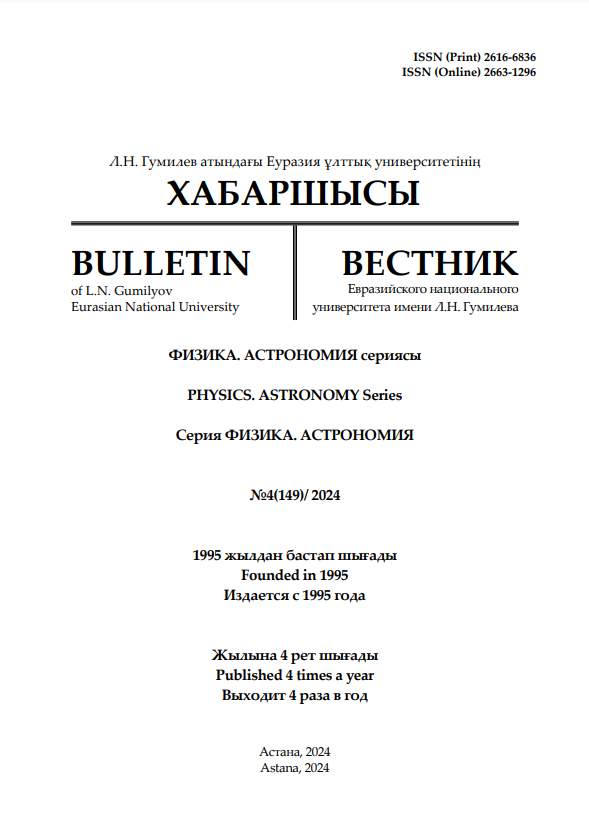Recombination emission in the phosphor CaSO4-Pb2+
Views: 198 / PDF downloads: 125
DOI:
https://doi.org/10.32523/2616-6836-2024-149-4-199-215Keywords:
sulfate, electron, recombination emission, intrinsic emission, hole, excitationAbstract
Optical methods were used to investigate the formation of combined or induced electronic emissive states in irradiated CaSO4-Pb2+ phosphor at 2.9 eV and 3.1 eV. The combined electronic emissive state consists of electronic states of impurity Pb+-SO4- and intrinsic SO43--SO4- trapping centers. The impurity electronic states are formed by capturing free electrons of conduction band by Pb2+ impurities and localizing electrons resulting from charge transfer from the excited anion complex SO42-(O2--Pb2+) impurities by reaction Pb2++(e-+SO4-)→Pb+-SO4-. The intrinsic electronic states are formed by capturing free electrons of conduction band by anion complexes or by localizing electrons resulting from charge transfer from the excited anion complex SO4-(O2--SO42-) to neighboring anion complexes by reaction SO42-+(e-+SO4-)→SO43--SO4-. The combined electronic emissive states at 2.9 eV and 3.1 eV are excited by photons of 3.9-4.0 eV and 4.5 eV. It was also experimentally shown that in the phosphor with induced trapping centers, recombination emissions at 3.1 eV and 2.9 eV are regenerated upon excitation by photons of 3.9-4.0 eV and 4.5 eV. Thus, energies of 3.9-4.0 eV and 4.5 eV are the excitation and absorption energies between the electronic and hole trapping centers located in the transparency region of CaSO4-Pb2+ phosphor.










